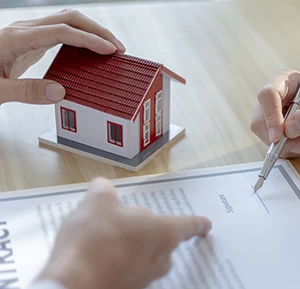What is Buy-to-Let?
Put simply, a Buy-to-Let mortgage is one you take out on a property you plan to let out to tenants.
Buy-to-Let mortgages (BTL) are usually more expensive than regular mortgages, and because of the nature of letting, can be a risky business in terms of earning potential.
However, with the right information and guidance, investing in a Buy-to-Let property can be the perfect way for a contractor to boost income.
The Buy-to-Let market has changed considerably in recent years with more changes on the horizon. If you are thinking about buying a property to let, there are several things that need to be considered.
What Are the Costs of Being a Landlord?
As you probably suspect there are many elements involved before your property is ready to be let out.
From repairs to decorating, it’s important to think not only about your budget for the property but about your budget for getting the property ready to go on the market.
Other costs you might incur include Buy-to-Let stamp duty, as well as running cost, such as:
Furnishing the property (if you so choose)
Income tax
Mortgage repayments
Smoke and carbon monoxide alarms
Letting agent fees
Landlord insurance
Energy Performance Certificates
Gas Safety Certificates
Can I convert my mortgage to buy-to-let?
If you decide you want to convert your current mortgage to buy-to-let, there are a couple of different options for you. Whether you would prefer to apply to change your current mortgage or remortgage the property altogether, we give you the lowdown on how to get the right mortgage for you.
With the base interest rate rising, many people are considering whether now is the right time to remortgage. If you’ve decided that you want to change your current residential mortgage into a buy-to-let mortgage, you have two main options: seek consent from your lender to convert your mortgage into a buy-to-let, or remortgage your property.
With the mortgage market changing quickly, it’s important to know your options and have a clear picture of how to convert your mortgage.
Why convert your mortgage to buy-to-let?
There are a few different reasons to convert your existing mortgage. If you decide not to move into your property for whatever reason, will be travelling and away from the property for an extended time, are relocating due to work or decide you want to buy a new property entirely, you might choose to convert. Remember that due to the mortgage terms you are not legally allowed to live in a property with a buy-to-let mortgage, so you can only convert if you want to let it out completely.
Converting your mortgage might also be beneficial for you financially. The lending criteria for a residential mortgage is different for a buy-to-let. When it comes to letting, you can include the potential rent as part of your income, making these loans potentially more affordable in the long term.
What are your options?
If you decide this is the right option for you, there are two main ways to convert your mortgage.
One option is seeking consent to let. This is a short-term solution in which your lender allows you to rent your home – or a part of it – for a short period of time. It’s important to note that this is only a temporary solution.
The second option is to remortgage your property to turn it into a long-term rental. This process is effectively the same as getting a new mortgage but will allow you to turn your property into a rental property for as long as you want it.
Which is the right option for you?
Seeking consent to let is mainly for short-term uses. If you’ll be away travelling or won’t be living at the property for a period of time, your lender may allow you to temporarily change the terms of your mortgage. Not all lenders do this, and it isn’t the right choice if you are looking to rent the property on a long-term basis.
It’s much more common to remortgage altogether. As with any other mortgage, you’ll usually need to make a deposit of somewhere between 30 and 40 percent. With your next buy-to-let mortgage replacing your existing one – you will only have one mortgage to pay off on the property which can often be paid off by accumulated savings made from your rental income.
Before converting your mortgage into a buy-to-let, it’s important to understand your options and the pros and cons of each before deciding which is the best for you. CMME specialise in mortgage advice for independent professionals like you. To take your financial future into your own hands, give them a call on 01489 555 080 or Click here
